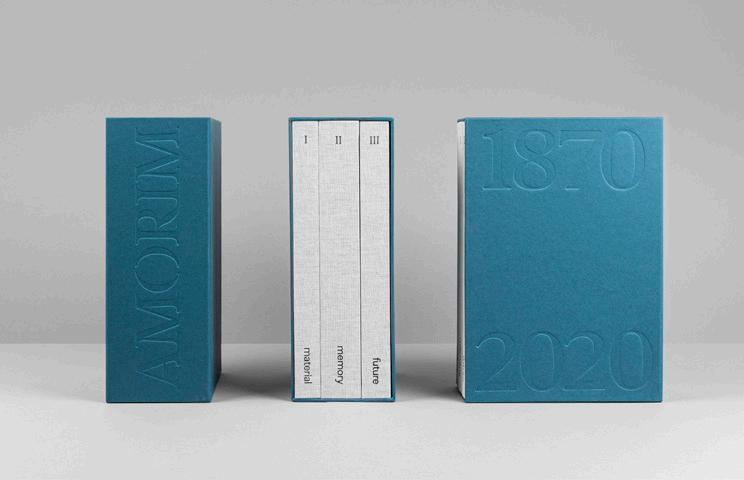
3 minute read
1870 AMORIM 2020: Matéria, Memória, Futuro (Material, Memory, Future)
Corticeira Amorim has just published “1870 AMORIM 2020”, dedicated to the Amorim family’s 150 years of business history. Divided into three volumes, “Material”, “Memory” and “Future”, the publication traces the projects, challenges and achievements charted by the four generations of the family. Inspired by the motto “not just one market, not just one client, not just one currency, not just one product”, the Amorim group has overcome geographical barriers, economic crises, political regimes, social upheavals and industrial constraints, to become one of the main players in Portugal’s business ecosystem, with major international projection. Its position as the global leader in the cork sector, is currently consoli‑ dated in dozens of companies, operating across five continents, that export various products to more than 100 countries. This genuinely Portuguese raw material involves more than 4,400 employees around the world on a daily basis. This epic journey began in 1870, when António Alves de Amorim founded a small cork workshop in Vila Nova de Gaia, to take advantage of the rising interna‑ tional demand for port wine. This inaugural milestone, identified in the volume, “Memory”, was the initial seed of multiple events that have enhanced the Amorim family’s history. 150 years of tremendous effort, initiative and perseverance have cork as a common denominator ‑ the raw material upon which one of Portugal’s most solid economic groups has been built. Based on thorough research by Professor Carlos Oliveira Santos, the volume also reveals how the family’s internal dynamics determined the Amorim group’s key management decisions and successes. Clearly the most notable figure in this history was Américo Amorim, one of the main people responsible for the industrial expansion, vertical integration and interna‑ tionalisation of the cork business, and who led the group’s pioneering and successful incursion into many other business sectors, such as banking, real estate, telecommuni‑ cations, hotels and tourism.


But, there would be no history to tell without this unique raw material. Cork’s unique attributes, qualities and characteristics have inspired the creation of countless objects, solutions and functions. Also based on research coordinated by Professor Carlos Oliveira Santos, the volume, “Material”, divides this narrative into four moments – the four “Eras of Cork” ‑ tracing a fascinating path that demonstrates how quickly humanity realised the tremendous potential of cork. This 100% natural, ecological, renewable, recyclable and reusable product was used in Antiquity as a seal for amphorae. During the Medieval, Industrial and Post‑in‑ dustrial eras there has been continued search for new uses of this gift from Nature.
Envisioning the future
Our 150th anniversary is the perfect opportunity to look towards the future. Corticeira Amorim is thinking about, designing and building the future, focusing on innovation, research and sustainability. The company is certain of the growing role that cork will play in creating a better world. Cork has unique characteristics that no product created in a laboratory has yet been able to replicate: each cubic centimetre of cork contains about 40 million cells! It is a 100% natural, ecological, renewable, recyclable and reusable raw material. Light, waterproof and hypoal‑ lergenic. An elastic and compressible organic resource, waterproof, floating and resilient, which offers thermal and acoustic insulation. An unparalleled raw material that is capable of generating social, environ‑ mental and economic value, with high sustainability credentials, and which helps ensure a balanced climate. The volume, “Future”, written by the journalist, Nelson Marques, also explores the spectrum of products, solutions and possible applications, spanning an endless set of domains ‑ from the still and sparkling wines and spirits sector, to the aerospace, automotive, construction, sports, energy and interior design sectors – to name but a few. Also noteworthy is the set of projects capable of revolutionising the paradigm of the cork sector, such as forestry inter‑ vention, viability of the cork oak forest or forest 4.0, or the group of materials, processes and formulae that can enhance cork’s properties. “1870 AMORIM 2020” features photographs by Lara Jacinto, design by Atelier d’Alves and printing and finishing by Gráfica Maiadouro.










